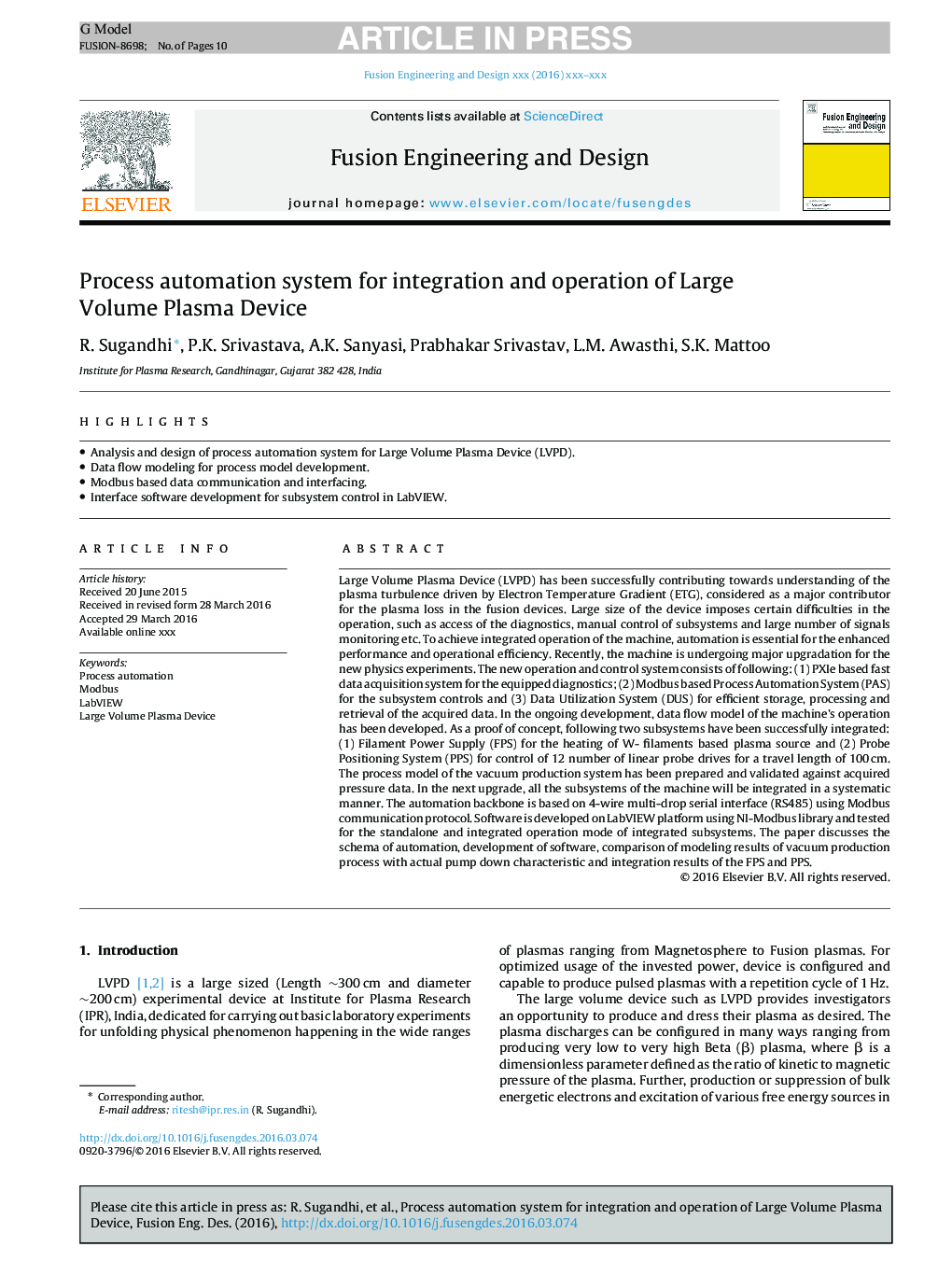| Article ID | Journal | Published Year | Pages | File Type |
|---|---|---|---|---|
| 6744956 | Fusion Engineering and Design | 2016 | 10 Pages |
Abstract
Large Volume Plasma Device (LVPD) has been successfully contributing towards understanding of the plasma turbulence driven by Electron Temperature Gradient (ETG), considered as a major contributor for the plasma loss in the fusion devices. Large size of the device imposes certain difficulties in the operation, such as access of the diagnostics, manual control of subsystems and large number of signals monitoring etc. To achieve integrated operation of the machine, automation is essential for the enhanced performance and operational efficiency. Recently, the machine is undergoing major upgradation for the new physics experiments. The new operation and control system consists of following: (1) PXIe based fast data acquisition system for the equipped diagnostics; (2) Modbus based Process Automation System (PAS) for the subsystem controls and (3) Data Utilization System (DUS) for efficient storage, processing and retrieval of the acquired data. In the ongoing development, data flow model of the machine's operation has been developed. As a proof of concept, following two subsystems have been successfully integrated: (1) Filament Power Supply (FPS) for the heating of W- filaments based plasma source and (2) Probe Positioning System (PPS) for control of 12 number of linear probe drives for a travel length of 100Â cm. The process model of the vacuum production system has been prepared and validated against acquired pressure data. In the next upgrade, all the subsystems of the machine will be integrated in a systematic manner. The automation backbone is based on 4-wire multi-drop serial interface (RS485) using Modbus communication protocol. Software is developed on LabVIEW platform using NI-Modbus library and tested for the standalone and integrated operation mode of integrated subsystems. The paper discusses the schema of automation, development of software, comparison of modeling results of vacuum production process with actual pump down characteristic and integration results of the FPS and PPS.
Keywords
Related Topics
Physical Sciences and Engineering
Energy
Energy Engineering and Power Technology
Authors
R. Sugandhi, P.K. Srivastava, A.K. Sanyasi, Prabhakar Srivastav, L.M. Awasthi, S.K. Mattoo,
